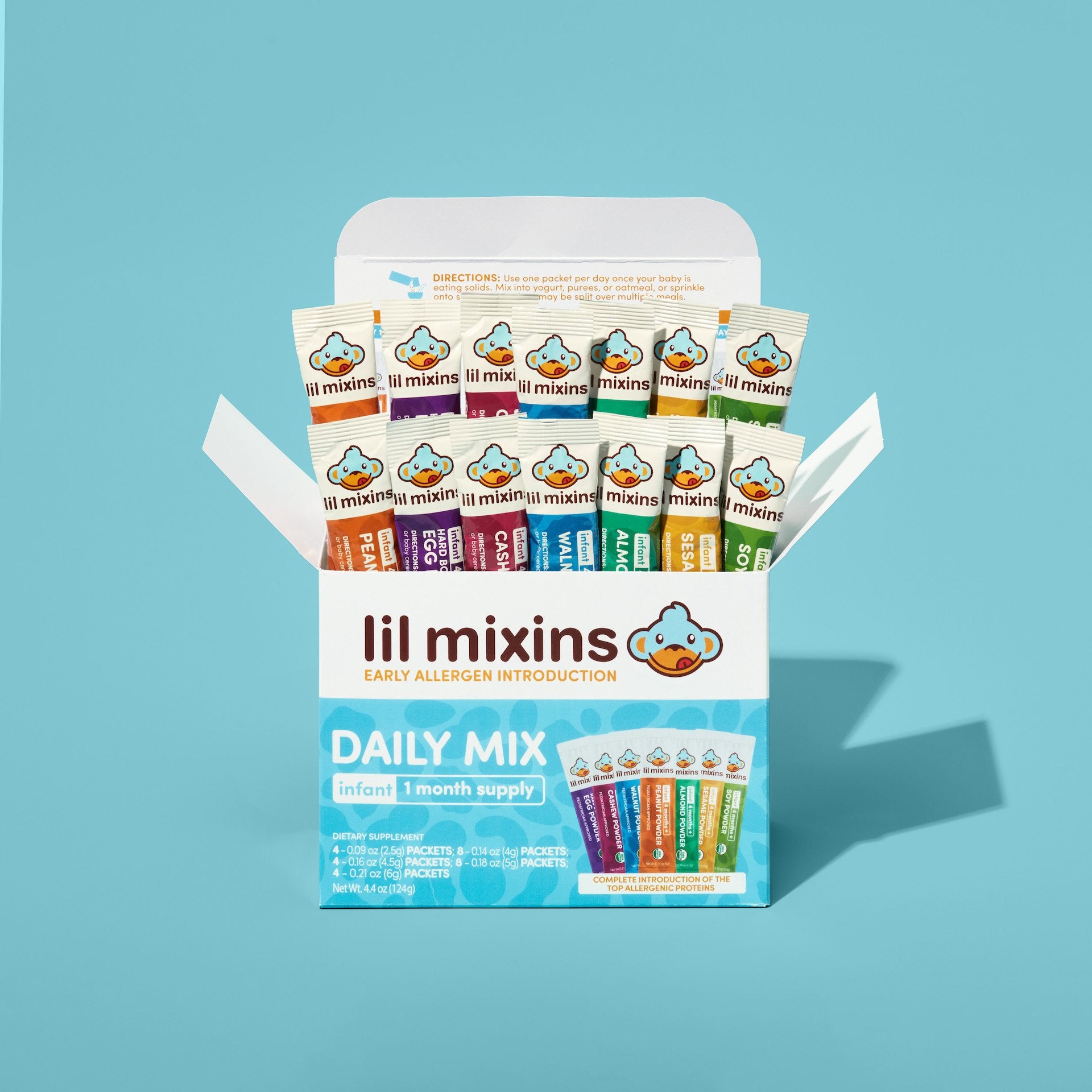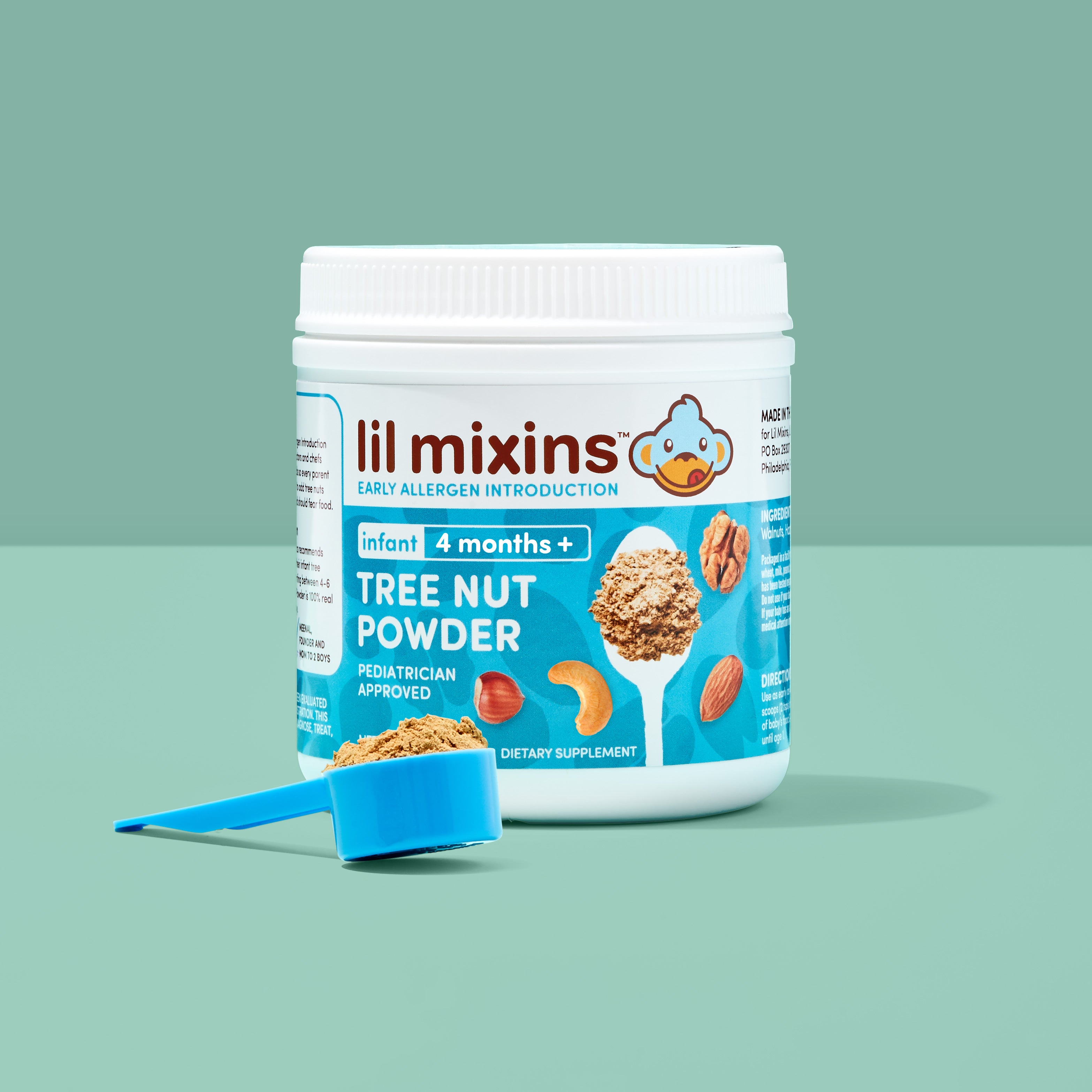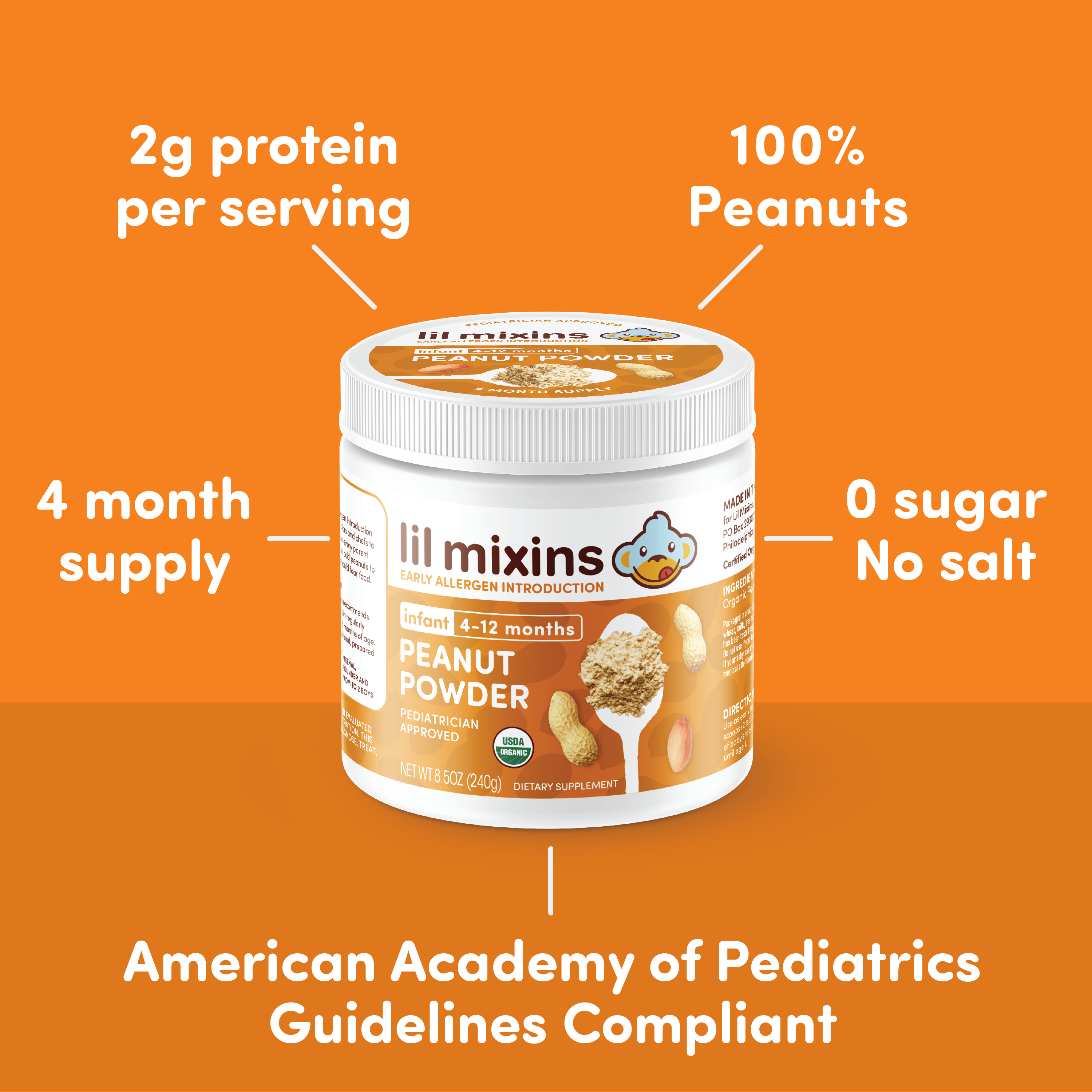How Doctors Test Your Child for Food Allergies
Feeding your baby new foods is an exciting milestone for any parent. But with new foods comes the worry of food allergies. Here’s what you should know about testing your child for food allergies.
When to Get Food Allergy Testing
The only time you should get your child tested for food allergies is when they have shown a reaction to a food. If your child seems to develop hives, stomach pain, itchiness, or eczema after eating a particular food, you should contact your pediatrician, who will most likely suggest testing for an allergy to that food.
The exception is if your baby has an allergy that is strongly linked to another allergy. For example, most people with walnut allergy have a pecan allergy. A child who has reacted to walnuts may get tested for sensitivity to other tree nuts.
You should not, in general, test for allergies to foods your child is not reacting to or has never eaten. Here’s why.

Shop Daily Mix One-Month Supply
Infant Allergy Testing
The only true test of a food allergy is an oral food challenge.
Skin prick tests and blood tests look for sensitivity to food, or signs that the immune system has created alarm bells (antibodies) for that food. Sensitization is not an allergy.
Sensitization means your baby’s body has flagged a particular food as potentially dangerous. Having antibodies does not prove that their body will react to that food.
For example, in one study, 86% of patients with a sensitivity to tree nuts passed an oral food challenge and went on to eat tree nuts normally. They were sensitized, but didn’t actually have a tree nut allergy.
This is why you shouldn’t have your baby tested for a food they’ve never eaten or haven’t had a problem with. Most allergists will even refuse to do so.
Skin prick tests and blood tests cause many parents to fear foods that their child may not actually have an issue with. They see a result indicating their baby’s immune system is sensitized to a food (remember, not allergic), and decide that they should avoid that food forever.
As a parent, there’s a strong urge to “just test them for everything,” but you should resist this because you will likely end up scared of foods that your child can eat just fine.
Any good allergist will tell you that the only true test of a food allergy is an oral food challenge. You eat the food, and wait to see if there is a reaction. If you react, you have a food allergy. If you have no symptoms, you do not have a food allergy to that food.
So why is skin prick or blood testing ever done?
- Food allergy symptoms in babies are way more mild than in older children and adults. Hives can often come from a cold virus or something else. If a child has had food allergy-like symptoms in the past, skin or blood testing can be a good way to confirm if it was truly an allergic reaction.
- Before doing a food challenge, skin or blood testing can help predict the probability of passing the food challenge. Failing an oral food challenge, meaning that the child has a reaction, can be scary for a child and their parents. If the probability of an allergy is really low, it’s worth doing a food challenge. If the numbers are really high, and there’s been some past event that made you suspect a food allergy, it may be smarter to avoid a food challenge and an unnecessary reaction just to prove it.
- If a child had a proven food allergy, comparing the results of skin testing and blood testing over time can help an allergist see if the child is naturally outgrowing the allergy.
- If a child is showing some symptoms, like belly pain all day, testing can help differentiate a food intolerance from a food allergy. You may still avoid foods that you are intolerant to, but you do not need to carry an epi-pen.
The goal of food allergy testing should be to find foods that your baby is NOT allergic to, so that your baby does not unnecessarily avoid foods.

Shop Tree Nut Mixin 4-Month Supply
What to Expect with Skin Prick and Blood Testing
In skin prick testing, the doctor will place a drop of liquid containing the allergenic protein on the skin and then push down to prick through the top layer of skin. If your baby’s body already has the antibody for that particular food or pollen, you’ll see a red puffy welt (called wheals) start to appear around that prick within fifteen minutes. Your doctor will look for these wheals and measure their size to determine the likelihood of a true allergy. Then they’ll wipe the area clean and apply a cortisone cream to stop any itching.

Our son's first skin prick test at the doctor's office
For blood testing, a tube of blood is taken using a needle. The blood is sent to a lab where food and pollen proteins are put into the blood sample, and the amount of antibodies that show up are counted.
Blood testing gives you a result for each food or pollen protein from 0-100. Higher scores in general mean a higher probability of a true allergy to that protein.
However, you should not interpret the results without consulting a doctor. Different levels mean different things for each allergen, and it is really common to see high numbers all around in children who also have eczema, asthma, or seasonal allergies.
We saw this with our son when he was first diagnosed and his eczema was not controlled. When the test was repeated a year later, all the values went down a LOT.

The printout showing our son's IgE blood test results
Oral Food Challenges
A doctor-supervised oral food challenge is the one definitive test of a food allergy. Food challenges, like skin prick and blood testing, are used to make sure someone is NOT allergic. If your doctor is fairly sure that your child has a food allergy, they will not do a food challenge to prove it.
Oral food challenges are often done to see if a child can eat some versions of a food, like baked egg or baked milk, which can open up eating options. Food challenges are also done when it seems like your child has outgrown a food allergy.
To do a food challenge safely, you will go to the doctor’s office and your child will eat a teensy amount of the food to start. Every 20 minutes or so, the doctor will check for any signs of a reaction and then have your child eat a larger amount of that food. After about 2 hours, your child will have eaten a full serving of the food. This process takes four hours, so come prepared!

Our son doing his oral food challenge with syrup covered french toast
Once your child has eaten a full serving of the food and shown no reaction for 2 hours, they can be cleared as not having that allergy.
While this process sounds simple, it is important to do this at a doctor’s office, so that you will have help nearby if a reaction does happen.
Conducting oral food challenges is important because many people end up changing their lives and avoiding foods they aren’t actually allergic to. When a blood test or a skin prick test shows a lower probability of a true allergy, an oral food challenge can bring peace of mind.
What About Home Food Allergy Test Kits?
These days, because my search history is all about food allergies, I see a lot of advertisements online for home-based food allergy or food intolerance screening tests.
None of these diagnostic tests have been cleared by the FDA. That means that they have never created and presented data showing that their tests work. Acupuncture, hair/urine testing, and any other such testing you may have heard of has also never proven itself with a real clinical study. These clinical studies are not particularly difficult to do, so they would get FDA approval if they could.
When it comes to food allergies, it's important to focus on proven testing methods because you do not want to hurt your child accidentally.
Conclusion
Hopefully this introduction to food allergy testing will be useful to you. If you have any further questions, definitely reach out to your child's pediatrician to get specific answers by a trained medical professional.
Remember that food allergy testing doesn't have to be stressful, and with proper care and management, you will pull through this uncertain period, just like we did.




